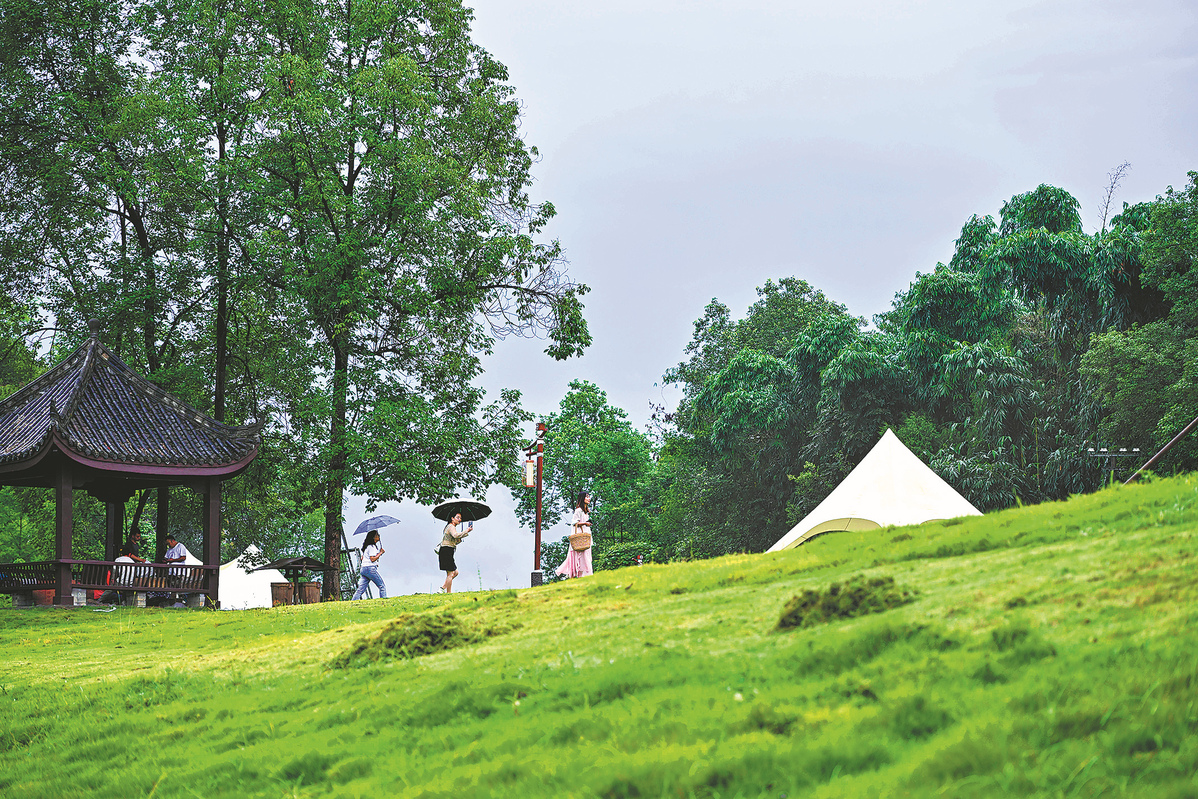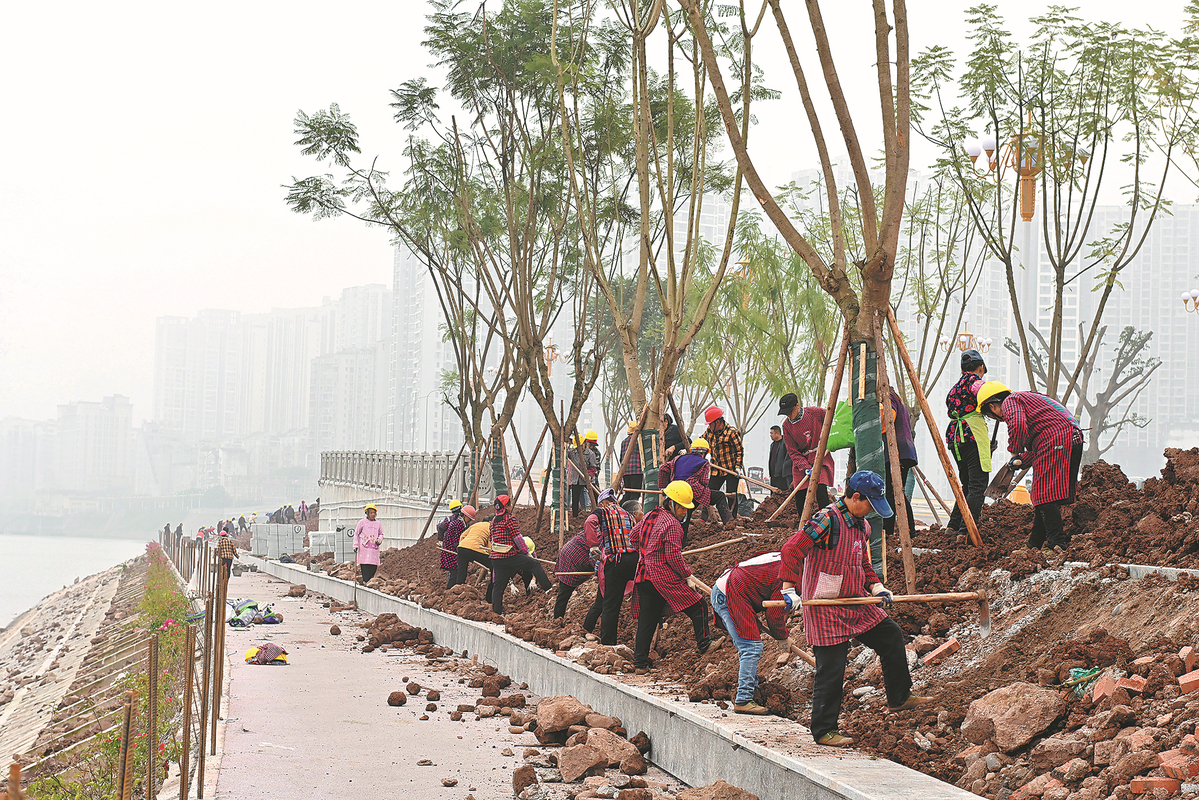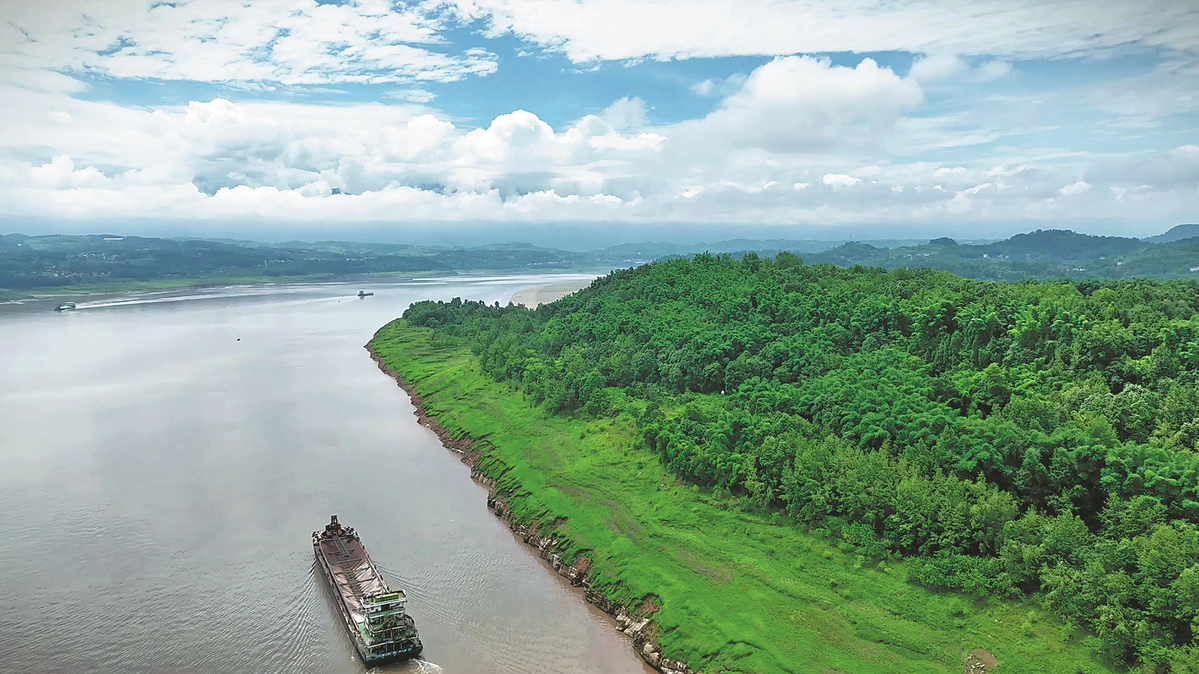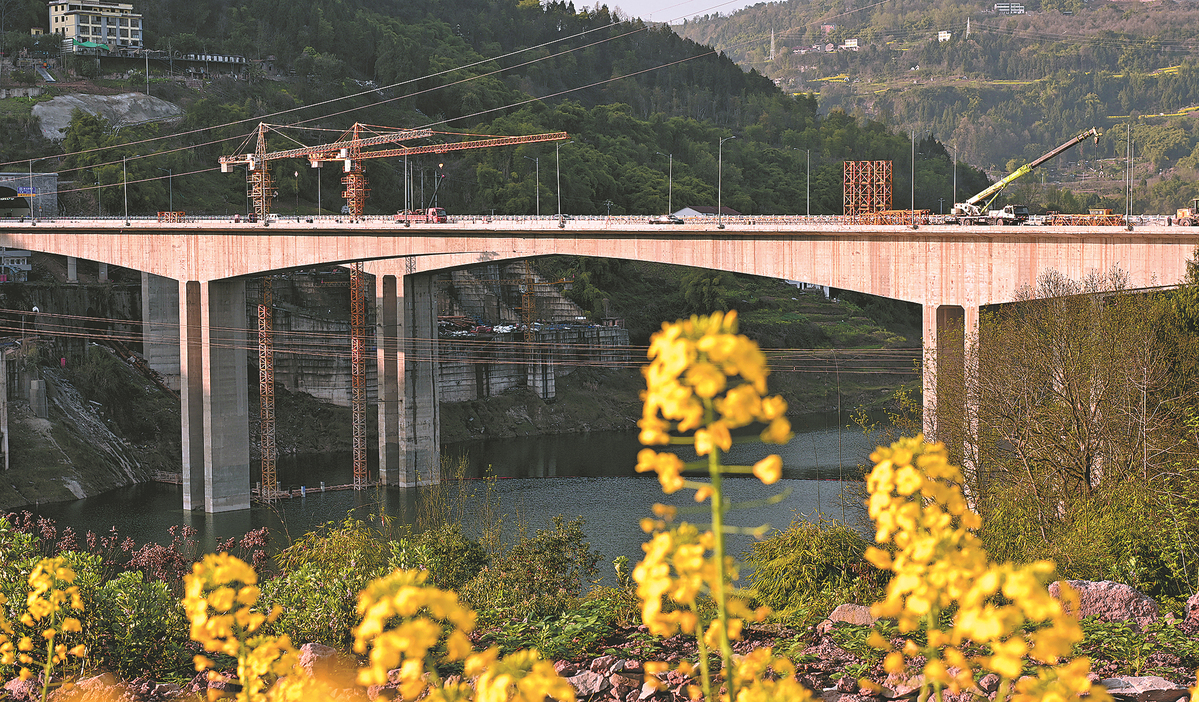
Tourists visit Huanghua Island in the Yangtze River in Zhongxian county, Chongqing, on Sept 20.
A fund related to follow-up work on the Three Gorges Reservoir has helped to attract tourists and improve local people's lives. Hou Liqiang reports from Chongqing.
Three years ago, Wang Suqin was desperate to move from the home she had occupied for nearly four decades in Zhongxian county in the southwestern mega city of Chongqing.
In the 20 counties covered by the Three Gorges Reservoir, the old town of Zhongxian, where Wang's home is located, represents the only urban area whose appearance is the same as it was before the project started in 1993.
Construction work quickly saw new buildings tower over nearby areas, leaving the 0.5-square-kilometer old town a pale shell by comparison. "The old town was bleak. Many people chose to move away," the 73-year-old recalled.
Now, though, Wang has changed her mind and said she will never leave.
Her change of attitude came thanks to a project launched by local authorities, with the help of funding from the central government, for follow-up work in the area around the reservoir, with a key element being the preservation of the local culture.

Workers are busy constructing a green belt on a bank of the Yangtze River in Zhongxian on Nov 23.
Renovation, rejuvenation
The project is a microcosm of Chongqing's efforts to preserve cultural relics in the follow-up work for the Three Gorges Reservoir. The work officially started in 2011, and thanks to the fund, the old town, along with many other cultural relics and traditional villages, has been not only been better protected, but rejuvenated.
According to the Chongqing Department of Water Resources, 977 million yuan ($136.5 million) was invested in 182 projects to protect cultural relics across the city from 2011 to July this year.
The city has built a Three Gorges-themed museum complex, comprising 17 facilities, to comprehensively demonstrate the Yangtze River civilization and the Three Gorges culture, the department said.
Wang said the poor infrastructure in Zhongxian's old town used to cause many problems. There were occasional power outages and the roads were full of bumps and hollows, which meant that children, and even adults, often fell over while walking around the area.
She added that the old water supply facilities meant residents only had access to poor-quality drinking water.
Things have changed, though. "Now, the old town has been significantly transformed," Wang said with a smile.

An aerial photo shows a ship passing near the bank of Huanghua Island in Zhongxian on Aug 4 last year.
Supported by the fund for the Three Gorges Reservoir's follow-up work, the Zhongxian government launched a renovation project with a total investment of approximately 184 million yuan in the old town. The infrastructure has been greatly improved and many old houses have been renovated.
The area still boasts some traditional cob-walled, wooden-framed houses, though most of the buildings are made from gray bricks, which were widely used across China during the last century but are no longer produced. A stone city gate built during the Ming Dynasty (1368-1644) is still intact.
While walking along the 1.8-kilometer street that crosses the old city, people born before the 1990s can easily witness childhood memories. Seniors still play card games on many street corners, a cinema that was built decades ago is still open, with the names of screening movies written in white chalk on a blackboard outside; and, there is also a bookstore that sells black-and-white picture books published in the last century.
On one corner, a timeworn chair sits in front of a mirror mounted on a gray brick wall. A modified bucket with a faucet at the bottom hangs over a table at an outdoor barber shop. The barber uses the modified bucket to wash the customers' hair. Open-air barber shops were once common in many areas across China, but they are rare now.
Large-scale demolition and construction were strictly banned during the renovation project, and all the repair work was done in a way that maintained the buildings' original appearances, said Fang Jianguo, head of Zhongxian's water resources department.

One side of the dual Longtangou bridge is seen under construction in Zhongxian on March 11. The other side was put into use earlier this year.
Relics, ruins
The renovation of the old town is just one of six cultural relics protection projects supported by the funds for the follow-up work on the reservoir, according to Liu Ying, deputy head of the Zhongxian Cultural Relics Protection Center.
The Huanghuacheng Archaeological Site Park opened to the public at the end of September. Among the relics featured are the ruins of a fort that was built on Huanghua Island during the Southern Song Dynasty (1127-1279). More than 40 percent of the 281 million yuan investment for the project came from the reservoir fund.
Thanks to the fund, the protection of cultural relics has been deeply integrated into Zhongxian's urban development, Liu said.
The old town has seen tourists pouring in as the renovation project continues, and many businesses are booming.
Attracted by the development of the old town, Mu Shucheng and his wife Yi Haohan, both Zhongxian natives, have opened businesses there.
Mu used to live apart from Yi as he worked on small construction projects in Guiyang, capital of Guizhou province. However, when he saw how business was booming at a milk tea outlet Yi opened in the old town in 2021, the 33-year-old decided to return home and open a barbecue noodle restaurant.
"The local government provided all the necessary equipment for my store, including the chairs. I only had to buy the things I use to cook the noodles," Mu said, adding that for the first eight weeks he was spared the monthly rent of 600 yuan for the roughly 20-square-meter store.
Business is good, especially at weekends and holidays. During the most recent National Day holiday, from Sep 29 to Oct 6, average sales at his outlet reached more than 2,000 yuan a day, he said. "I definitely make more from the business than I did working in construction," he said with a smile.
Yi said that it's good to have Mu back. "The local government has attached great importance to the protection of this old town. I believe that I will see business grow as the area continues to improve," the 32-year-old said.
According to local authorities, the old town received roughly 140,000 tourists during this year's National Day holiday, and also hosted a number of visitors from overseas.
On Oct 3, it was visited by 13 students from 10 countries who are all studying at universities in Chongqing.
Now, the residents enjoy high-quality tap water, all the roads have been sealed, and the old hustle and bustle has returned to the street, said Wang, the senior resident.
"I don't want to leave anymore," she said, smiling.
Source: Chinadaily